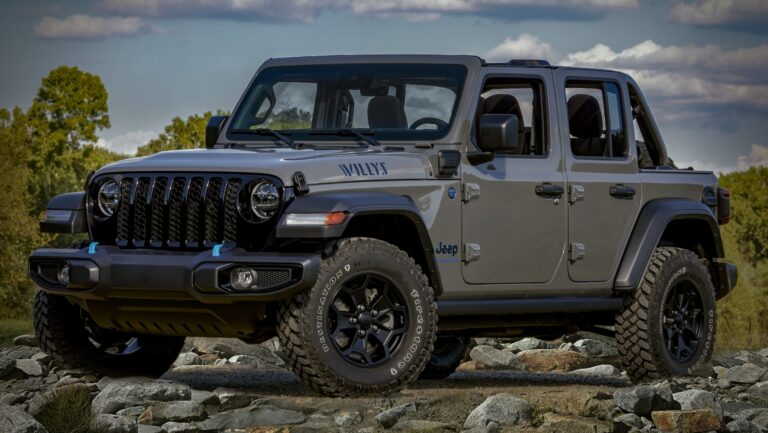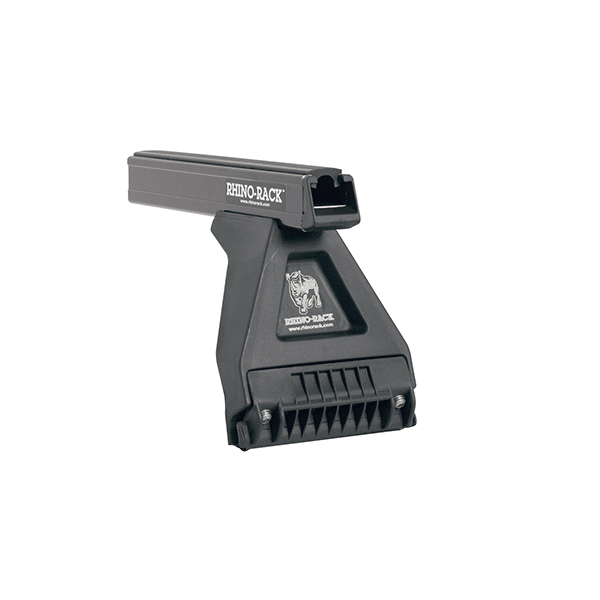1999 Grand Jeep Cherokee For Sale: Unearthing a Modern Classic
1999 Grand Jeep Cherokee For Sale: Unearthing a Modern Classic jeeps.truckstrend.com
In the vast landscape of pre-owned SUVs, few vehicles hold the enduring appeal and cult following of the 1999 Grand Jeep Cherokee. More than just a used car, the ’99 Grand Cherokee, part of the second-generation WJ series (1999-2004), represents a pivotal moment in Jeep’s history. It masterfully blended the rugged, off-road prowess synonymous with the brand with a newfound level of refinement, comfort, and technological sophistication for its era. For buyers today, the 1999 Grand Jeep Cherokee isn’t just a budget-friendly option; it’s a testament to robust engineering, a highly capable adventure machine, and a canvas for customization, offering remarkable value and a distinctive character that modern SUVs often lack. This comprehensive guide will delve into what makes the 1999 Grand Jeep Cherokee such a compelling "for sale" proposition, exploring its features, benefits, potential challenges, and how to find your perfect example.
The Enduring Appeal of the 1999 Grand Jeep Cherokee (WJ Generation)
1999 Grand Jeep Cherokee For Sale: Unearthing a Modern Classic
The 1999 model year marked the debut of the redesigned WJ Grand Cherokee, succeeding the popular ZJ generation. Jeep aimed to elevate the Grand Cherokee’s status, and they largely succeeded. While retaining the iconic seven-slot grille and boxy silhouette, the WJ introduced smoother lines, a more aerodynamic profile, and a significantly improved interior. Underneath, it boasted a redesigned unibody structure that was stiffer and lighter, contributing to better handling and a quieter ride.
What truly sets the 1999 WJ apart and contributes to its lasting appeal is its unique position in Jeep’s lineage. It was the last Grand Cherokee to feature solid front and rear axles (though independent front suspension would appear later in the WK generation), a hallmark of traditional off-road capability that many enthusiasts lament the loss of in newer models. This blend of classic Jeep ruggedness with modern (for its time) creature comforts makes the 1999 Grand Cherokee a versatile choice for a diverse range of buyers:
- Off-road enthusiasts: Seeking a capable, customizable platform without breaking the bank.
- Budget-conscious families: Needing a practical SUV with decent cargo space and all-weather capability.
- DIY mechanics: Appreciating its relative simplicity and vast aftermarket support.
- Classic SUV collectors: Recognizing its burgeoning status as a desirable piece of automotive history.

Key Features and Specifications to Look For
Understanding the nuances of the 1999 Grand Cherokee’s specifications is crucial when evaluating a "for sale" listing.
-
Engine Options:

- 4.0L PowerTech I6 (Inline-6): This legendary engine, carried over from the ZJ, is renowned for its bulletproof reliability, simplicity, and torque delivery. It produces 195 horsepower and 230 lb-ft of torque. While not a speed demon, its robust nature makes it a favorite for those prioritizing longevity and ease of maintenance. Paired with a proven 4-speed automatic transmission.
- 4.7L PowerTech V8: A new offering for the WJ, this V8 provided a significant boost in power (235 horsepower, 295 lb-ft of torque) and refinement. It’s mated to a more advanced 5-speed automatic transmission. The V8 offers better acceleration and towing capacity but can be slightly less fuel-efficient and potentially more complex to maintain than the I6.
-
Transfer Cases and 4×4 Systems: This is where the Grand Cherokee truly shines.
- Selec-Trac (NP242): Available primarily with the 4.0L, this part-time/full-time system offers 2WD, Full-Time 4WD, Part-Time 4WD High, and 4WD Low. The Full-Time mode is excellent for varied conditions, including paved roads, while Part-Time is for low-traction surfaces only.
- Quadra-Trac II (NP247): Standard with the 4.7L V8 (and optional on the 4.0L), this is a full-time system that uses a gerotor pump to transfer torque to the axle with the most grip. It’s a "set it and forget it" system, constantly monitoring and adjusting power distribution. It also offers 4WD Low.
- Quadra-Drive: The pinnacle of WJ 4×4 capability, available only with the 4.7L V8 and Quadra-Trac II. It adds Vari-Lok progressive limited-slip differentials to both the front and rear axles. This system can send nearly 100% of available torque to a single wheel if the other three lose traction, offering unparalleled off-road performance for a stock SUV.
-
Trim Levels: For 1999, the primary trims were:
- Laredo: The base model, still well-equipped with power windows/locks, air conditioning, and cloth seats.
- Limited: The upscale trim, adding features like leather upholstery, power-adjustable seats, automatic climate control, steering wheel audio controls, an Infinity sound system, and often a sunroof. The Limited is typically the more sought-after version.
-
Interior and Comfort: The 1999 WJ’s interior was a significant upgrade, offering better materials, improved ergonomics, and a more comfortable ride than its predecessor. Depending on the trim, features like heated seats, a premium sound system, and a trip computer could be found.

Why Buy a 1999 Grand Jeep Cherokee Today? Benefits and Advantages
The decision to purchase a 1999 Grand Jeep Cherokee "for sale" today comes with a host of compelling benefits:
- Exceptional Value for Money: For a fraction of the cost of a new SUV, you can acquire a highly capable and surprisingly comfortable vehicle. Its depreciation curve has flattened, meaning you’re buying at or near the bottom of its value.
- Unmatched Off-Road Capability (Stock and Modified): With solid axles, impressive ground clearance, and advanced 4×4 systems like Quadra-Drive, the WJ is a true off-road beast straight from the factory. The aftermarket is flooded with parts for lifts, armor, and performance upgrades, allowing for extreme customization.
- Robust and Reliable (Especially the 4.0L I6): The 4.0L engine is famous for its longevity, often exceeding 200,000 or even 300,000 miles with proper maintenance. While the 4.7L V8 is also durable, the I6 is simpler and less prone to certain issues.
- Practicality and Utility: With seating for five and a decent cargo area, the Grand Cherokee can serve as a capable daily driver, a family adventure vehicle, or a reliable tow rig (with appropriate V8 and towing package).
- DIY-Friendly and Excellent Parts Availability: The WJ is relatively simple to work on, making it a great option for those who prefer to do their own maintenance and repairs. Parts, both OEM and aftermarket, are widely available and generally affordable.
- Distinctive Character: Unlike many modern SUVs that blend into the automotive landscape, the 1999 Grand Cherokee has a classic, purposeful look that stands out.
Important Considerations Before Purchase: Challenges and Solutions
While the 1999 Grand Cherokee offers significant advantages, it’s a 25-year-old vehicle, and potential buyers must be aware of common issues to make an informed decision.
-
Common Mechanical Issues:
- Blend Door Actuator (HVAC): A notorious issue where the HVAC system’s blend doors break, leading to no heat or AC on one side, or inability to change temperature/vent settings. Repair involves removing the dashboard (labor-intensive) or installing aftermarket "blend door repair kits" that can be done without dash removal.
- Rust: Especially prevalent in areas that use road salt. Inspect the rocker panels, lower quarter panels, frame rails, and suspension mounting points thoroughly.
- Oil Leaks (4.0L): Valve cover gaskets, oil filter adapter o-rings, and rear main seals are common culprits. These are usually manageable but indicate neglect.
- Transmission Issues: Early 5-speed automatics (4.7L) can be prone to rough shifts or failure if fluid changes were neglected. The 4-speed with the 4.0L is generally very robust.
- Front End Wear: Ball joints, tie rod ends, and steering box play are common due to age and off-road use. Listen for clunks and feel for excessive play in the steering.
- Electrical Gremlins: Power window motors, sensor failures (e.g., crank position sensor), and dashboard light issues can occur.
- Quadra-Trac II/Quadra-Drive Fluid: These systems require a specific "NV247 transfer case fluid" (often Mopar PN 05016796AC). Neglecting this can lead to expensive transfer case failure. Ensure it has been serviced.
-
Pre-Purchase Inspection (PPI): This is non-negotiable. Have a trusted mechanic (ideally one familiar with Jeeps) inspect the vehicle thoroughly, especially focusing on the issues listed above. A PPI can save you thousands in unexpected repairs.
-
Maintenance History: Demand to see maintenance records. A well-documented history of regular oil changes, fluid flushes, and proactive repairs indicates a conscientious owner and a potentially healthier vehicle.
-
Budget for Repairs: Even with a clean PPI, budget for some immediate maintenance and potential minor repairs. Tires, brakes, and fluids might need attention soon after purchase.
Finding Your Ideal 1999 Grand Jeep Cherokee For Sale: Tips for Buyers
Searching for a 1999 Grand Jeep Cherokee "for sale" requires a strategic approach.
-
Where to Look:
- Online Marketplaces: Craigslist, Facebook Marketplace, AutoTrader, eBay Motors are prime hunting grounds. Be prepared to filter through many listings.
- Specialized Forums/Groups: Jeep enthusiast forums (e.g., JeepForum.com) or dedicated WJ Facebook groups often have "for sale" sections where owners sell well-maintained or modified vehicles.
- Local Dealerships: Less common, but sometimes a trade-in might appear. Expect higher prices and less room for negotiation.
-
What to Ask the Seller:
- "How long have you owned it?"
- "What’s the service history like? Do you have records?"
- "Why are you selling it?"
- "Has it ever been off-roaded? If so, what kind of trails?"
- "Are there any known mechanical issues or warning lights?"
- "When was the last time the transmission and transfer case fluids were changed?"
-
What to Inspect (Beyond the PPI):
- Engine Bay: Look for fluid leaks (oil, coolant), listen for unusual noises (knocks, ticks, squeals), check fluid levels and clarity.
- Undercarriage: Inspect for excessive rust, bent components (from off-roading), and fluid leaks from differentials or transfer case.
- Interior: Check all power accessories (windows, locks, radio, AC/heat, sunroof), seat condition, and dashboard warning lights. Test the 4×4 selector.
- Test Drive: Listen for clunks over bumps, feel for steering play, check brake effectiveness, and ensure the transmission shifts smoothly without hesitation or harshness. Test all 4×4 modes (on a safe, appropriate surface if possible).
-
Negotiation Tips: Be polite but firm. Use any issues found during your inspection or test drive as leverage for price negotiation. Don’t be afraid to walk away if the vehicle doesn’t meet your expectations or the price is too high for its condition.
Price Table: 1999 Grand Jeep Cherokee For Sale (Estimated Values)
Please note: These prices are highly variable based on mileage, engine, 4×4 system (Quadra-Drive usually commands a premium), maintenance history, geographic location, and overall cosmetic condition. This table provides a general guideline for private party sales.
| Condition | Estimated Price Range (USD) | Key Factors Affecting Price |
|---|---|---|
| Poor | $1,000 – $2,500 | Significant mechanical issues, heavy rust, major cosmetic damage, high mileage (200k+), non-running or requiring major repairs. Suited for project or parts. |
| Fair | $2,500 – $4,500 | Minor mechanical issues, moderate rust, noticeable cosmetic flaws, average mileage (150k-200k), needs some immediate attention but drivable. |
| Good | $4,500 – $7,000 | Mechanically sound (minor issues acceptable), minimal surface rust, decent paint and interior, lower-to-average mileage (100k-150k), well-maintained. |
| Excellent | $7,000 – $12,000+ | Meticulously maintained, low mileage (<100k), no significant rust, pristine interior and exterior, all features functional, potentially desirable options (V8, Quadra-Drive). |
Note: Highly customized or exceptionally rare low-mileage examples with Quadra-Drive and the 4.7L V8 could exceed these top-end estimates.
Frequently Asked Questions (FAQ)
Q: Is the 4.0L or 4.7L engine better for a 1999 Grand Cherokee?
A: It depends on your priorities. The 4.0L I6 is known for its legendary reliability and simpler maintenance, ideal for daily driving and light off-roading. The 4.7L V8 offers more power, better acceleration, and higher towing capacity, often paired with the more advanced Quadra-Drive system, making it preferred for serious off-roading or towing.
Q: Is the 1999 Grand Cherokee good for off-roading?
A: Absolutely! The 1999 WJ is highly regarded for its off-road capability, especially models with Quadra-Trac II or Quadra-Drive. Its solid axles and generous aftermarket support make it an excellent platform for building a capable trail rig.
Q: What kind of fuel economy can I expect?
A: Don’t expect hybrid-like numbers. The 4.0L I6 typically gets around 15-18 MPG combined, while the 4.7L V8 will be slightly lower, closer to 13-16 MPG combined, depending on driving conditions and maintenance.
Q: Are parts expensive or hard to find for a 1999 Grand Cherokee?
A: Generally, no. OEM and aftermarket parts are widely available and relatively affordable due to the WJ’s popularity and long production run. Many common repairs can be done by a competent DIY mechanic.
Q: What’s the typical lifespan of a 1999 Grand Cherokee?
A: With consistent and proper maintenance, particularly for the 4.0L engine, many 1999 Grand Cherokees can easily exceed 200,000 miles, with some reaching 300,000 miles or more. The body and chassis often outlast neglected powertrains.
Q: What’s the difference between Selec-Trac, Quadra-Trac II, and Quadra-Drive?
A: Selec-Trac (NP242) is a manually selectable system with a full-time 4WD option for varied surfaces. Quadra-Trac II (NP247) is an automatic full-time system that uses a gerotor pump to transfer torque to the axle with the most grip. Quadra-Drive combines Quadra-Trac II with Vari-Lok limited-slip differentials in both front and rear axles, offering superior traction by sending power to a single wheel if needed.
Conclusion
The 1999 Grand Jeep Cherokee, a quarter-century after its debut, continues to be a formidable and attractive option in the used SUV market. It offers a unique blend of rugged capability, surprising comfort, and an undeniable character that sets it apart from its modern counterparts. While a thorough inspection and awareness of common issues are paramount when considering a "1999 Grand Jeep Cherokee for sale" listing, the rewards are significant. A well-maintained 1999 WJ provides incredible value, a reliable daily driver, and a gateway to off-road adventures, proving that true capability never goes out of style. For those seeking a vehicle that embodies the spirit of adventure without breaking the bank, the 1999 Grand Cherokee remains an outstanding choice.




